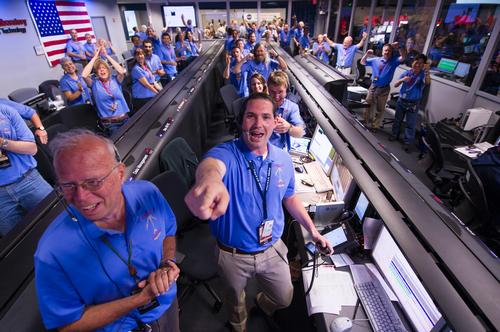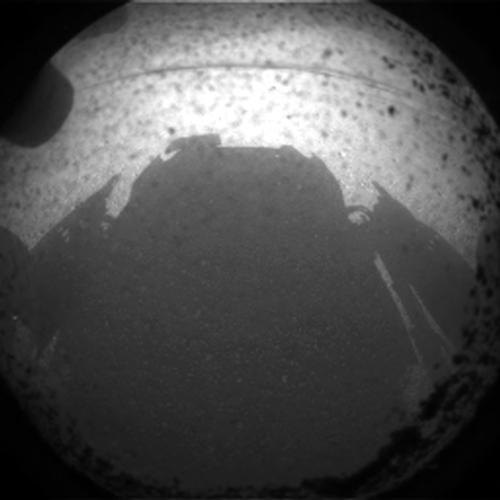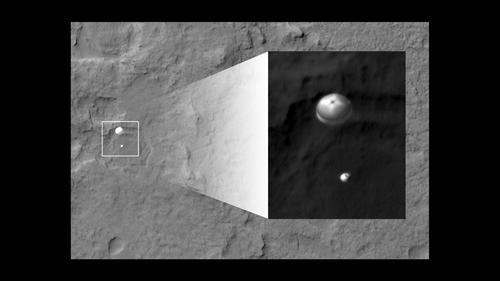Quarter-mile-wide asteroid coming close to Earth

Now it's stuff like this that keeps me up late at night, because truth be told, we can't see it all and one of these could come crashing through our atmosphere any day.
An asteroid bigger than an aircraft carrier will dart between the Earth and moon on Tuesday - the closest encounter by such a huge rock in 35 years.
Read more HERE
Researchers complete 520-day mock mission to Mars

Could you imagine 520 days in a small environment with the same people? Oh wait, it's called prison and we've seen that people can do it for hundreds of years.
Pale but smiling, an international crew of researchers on Friday walked out of a set of windowless modules after a grueling 520-day simulation of a flight to Mars.
Read more HERE
Space science on the wings of starfighters

While this is all fine and dandy, I don't care about sub-orbital research, I care about traveling out of our orbit and far far away.
A NewSpace company based out of New Port Richey in Florida is working to provide suborbital access to space for firms with scientific payloads. The Star Lab project is an experimental suborbital launcher, designed to provide frequent, less expensive access to sub-orbit. This could allow educational and scientific institutions across the nation to conduct experiments that would normally be impractical.
Read more HERE
Space junk problem? Just fire a laser!

Hrmm, this will work once you can create a powerful enough laser, however... what will it do to the atmosphere? Then of course the next logical step of this is planetary defense weapons for when the Syndic try to attack the alliance (see the Lost Fleet series).
Imagine yourself as an astronaut performing scientific experiments and crowd-stunning aerobatics. Suddenly, ear-stinging, blaring alarms go off. Mission Control radios that all space station personnel should evacuate to the rescue vehicles because a piece of deadly space debris is headed your way.
Read more HERE
Kepler space telescope mission extension proposal

All I can say is they better keep funding it. Kepler has found a lot of cool things and will continue to do so as long as it's functional and funded.
Some potentially good news for exoplanet fans, and Kepler fans in particular – Kepler scientists are asking for a mission extension and seem reasonably confident they will get it. Otherwise, funding is due to run out in November of 2012. It is crucial that Kepler receive renewed funding in order to continue its already incredibly successful search for planets orbiting other stars. Its primary goal — and the holy grail of exoplanet research — is finding worlds that are about the size of Earth, orbiting in the “habitable zone” of stars that are similar to our Sun, where temperatures could allow liquid water on their surfaces.
Read more HERE
City lights could reveal E.T. civilization

Hrmm searching for E.T. via light pollution... not a bad idea.
In the search for extraterrestrial intelligence, astronomers have hunted for radio signals and ultra-short laser pulses. In a new paper, Avi Loeb (Harvard-Smithsonian Center for Astrophysics) and Edwin Turner (Princeton University) suggest a new technique for finding aliens: look for their city lights.
Read more HERE
Scientists study the 'galaxy zoo' using Google Maps and thousands of volunteers

I love crowd sourced projects like these. I also love that this stuff is available to the general population... there is no benefit to mankind by hording knowledge, it should be shared.
The reddest galaxies with the largest central bulb show the largest bars -gigantic central columns of stars and dark matter-, according to a scientific study that used Google Maps to observe the sky. A group of volunteers of more than 200,000 participants of the galaxy classification project Galaxy Zoo contributed to this research.
Read more HERE






.jpg?__SQUARESPACE_CACHEVERSION=1334183074976)





























